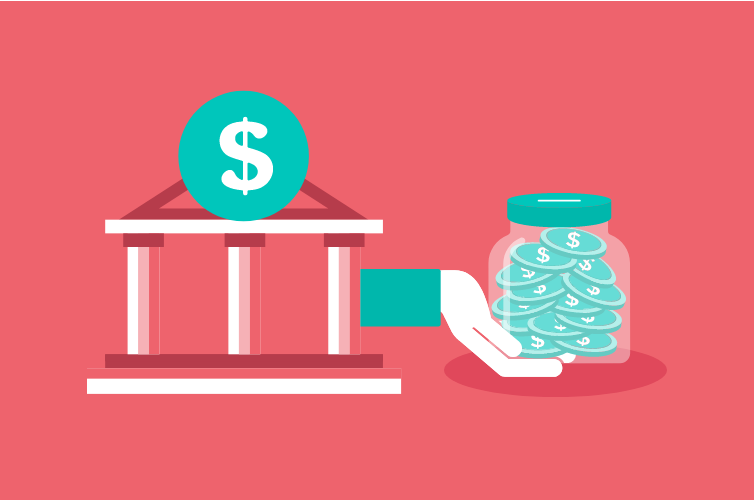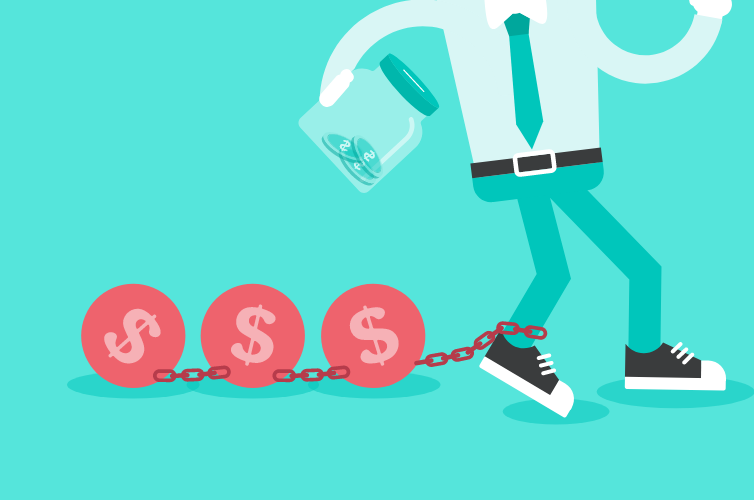6 ways to improve your liquidity management
Maintaining a positive cash flow is a critical factor for the prosperity of small and medium-sized businesses. Liquidity is what allows them to pay employees and suppliers and, in the longer term, ensure the sustainability of the business.
A positive cash flow is not maintained by magic, you have to adapt it and constantly apply good liquidity management practices. Here’s why it is important to know how to properly manage liquidity and how to go about it.
Why?
Businesses that do not manage their liquidity have a much harder time procuring the investments and resources required to remain competitive or they have to pay more when the time comes to borrow money from the bank.

A constant lack of liquidity can lead to conflicts and a loss of confidence by your suppliers, but in the worst case, poor liquidity management could even lead to a business's bankruptcy. Here’s why it is essential to implement measures to favour a positive cash flow.
How?
Just like managing your budget or reflecting on your marketing strategies, you need a plan. Here are practices to adopt in your regular processes that will make a big difference in your liquidity management.
01 Bill faster
This is a fairly simple principle: the faster you bill, the faster you receive your payment. Mailing invoices several days or weeks after the service was provided or the product was sold does not help you get paid faster. Many businesses are now adopting mobile tools for invoicing. This allows them to rapidly produce an invoice directly at the customer's location and accelerate their invoicing cycle and the time it takes to receive their payment.
02 Adopt online payments
Another way to encourage your customers to pay faster is to offer the possibility of paying online with a credit card or a bank transfer. When your customers pay by cheque, you have no way of knowing when you will receive your payments and it is more difficult to anticipate fund entries. Perhaps the phrase “The cheque is in the mail!” sounds familiar to you? With online payments, this saying will be a thing of the past! This is a win-win situation for everyone; it's easier and more user-friendly for your customers and faster and more efficient for you.
03 Adopt progress billing
Progress billing is already a well-established practice in the construction industry, but it is beneficial for many activity sectors. With progress billing, your customer pays you a percentage of the total invoice at various steps in a project.
It is better to opt for progress billing, rather than waiting until the end of the project to recover the funds that you have already committed. This will allow you to have enough funds throughout the project to pay your employees and your suppliers working on the same project, without having to go into debt.
04 Finance large purchases
Many entrepreneurs go into business with the impression that it is always better to settle their purchases without financing. That is not true in all cases. To manage your liquidity, it is not recommended that you pay for large purchases in cash. The golden rule is that you should pay for your purchases at the same speed as the profit that you will obtain from them.

For instance, consider a trucker who buys a truck to be used for 10 years with the goal of generating a profit in his business. It is to his advantage to finance the truck and pay for it at the same rate as the profit it generates, rather than disburse funds even before he has started to make a profit.
05 Negotiate with suppliers
Negotiating with your suppliers to obtain better terms of payment is another way to improve your liquidity management. The most common term of payment is net 30 days, but sometimes, by negotiating you can get a slightly longer term, which allows you to synchronize your fund disbursements with your fund entries and avoid late payment penalties. The biggest advantage is avoiding a lack of liquidity to pay your other expenses.
In addition to negotiating with your suppliers, you can also implement terms of payment which could encourage your customers to pay faster, thereby allowing you to receive liquidity faster. For example, the 2/10 net 30 term of payment also has a 30-day payment deadline after the remittance of the invoice, but when your customers pay their invoice in less than 10 days, you offer them a 2% discount on this same transaction.
06 Prioritize your payments
In an ideal world, everyone would pay their invoices just in time, without any delays or excuses. Unfortunately, that is far from always being possible. The reality of entrepreneurs is that often several expenses and payments are due in the same week and cannot all be settled at the same time.

If a delay in the payment of one of your invoices leads to serious immediate consequences (such as blocking the rest of your operations), this is the one you should probably pay first.
Choose your tools
To favour a positive cash flow, we recommend that you benefit from the tools available to you to follow and analyze your liquidity and to help you better manage it.
As mentioned above, mobile technologies can help you invoice faster and electronic payment platforms allow you to receive your payments faster as well. Do not hesitate to contact our team of experts to obtain more information on our various solutions which can help you to better manage your liquidity!

The Acomba blog is brimming with articles on business, IT and business management.
Subscribe so you don’t miss a thing!

I am already subscribed